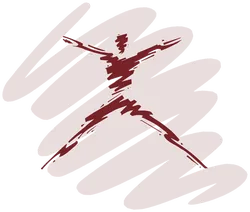Sciatica – Causes, Symptoms and Treatment

- posted: Feb. 03, 2020
The sciatic nerve begins in your lower back and runs through your buttock region, down the back of your thigh and lower leg and all the way to your foot. Pain along this path is called “sciatica” because of its association with this nerve. Sciatica occurs when the nerve is injured, irritated or pinched at any point along this path. This can happen from something as simple as sitting at your desk all day – compressing the muscles the nerve runs through, or from trauma, disc herniation or tight muscles. Sciatic pain can be extremely annoying and disabling, affecting your ability to work, exercise and perform daily activities. There are many things that cause sciatica, most of which respond well to conservative treatment, like chiropractic care.
Causes
Sciatica is typically caused by compression of the sciatic nerve, or by pinching of the nerve roots by the spine that lead to the sciatic nerve. When a nerve is pinched it causes pain to radiate “down stream” from where it is pinched. With such a long nerve running all the way from the low back to the foot, there are many potential causes of sciatica.
Sitting compresses the muscles in the buttock region that can irritate the nerve as it passes through that region. Sitting also shortens the hamstrings and causes them to tighten, which can also compress the nerve.
Many lifestyle habits, athletic performance and job responsibilities can predispose one to sciatica. More serious conditions, though less common, can also cause sciatica.
The following include some conditions associated with leg pain and sciatica:
Piriformis Syndrome- the sciatic nerve runs very close to, and sometimes through the piriformis muscle. Muscle spasm, injury or tightness in this muscle is one of the most common causes of pain along the sciatic nerve.
Peripheral Impingement- tightness in the low back, gluteals, piriformis, and hamstring muscles can pinch the nerve along its path and cause pain.
Disc Herniation- Protrusion of, or inflammation around, the lumbar discs (a gel filling the space between vertebrae) can pinch and irritate the very beginning part of the nerve and cause pain all the way down to the foot.
Arthritis- over time bony protrusions can develop in your spine that pinches the nerve by the vertebrae in your back.
These are some of the most common causes and conditions that can contribute to sciatica. Other causes including nerve degeneration, like that found in diabetes, tumors and pathology are much less common, but more threatening. It is always important to be evaluated by a knowledgeable health care provider, like Dr. Friesen to determine the cause of your symptoms, and help you decide if chiropractic care for sciatica might be right for you.
Symptoms
Sciatica frequently starts as pain in the buttock or hamstring region. It can radiate part way, or completely down the leg and is often described as lightning pain, numbness, prickling, tingling, burning, stabbing, or aching. It is often worst when bending forward and rotating the trunk. These are all indicators that you may need to see a chiropractor for sciatica relief.
Treatment
Chiropractic care for sciatic pain relief generally includes several techniques, each chosen to relieve specific causes of sciatica. At Park East Chiropractic, care for sciatica incorporates:
Chiropractic adjustments: Gentle, controlled, and directed adjustments delivered to your spinal joints and tissues to restore optimal movement and function.
Flexion Distraction: Gentle gapping of the joint space in the low back to ease pressure off of the nerve roots by the spine. This has been shown to be one of the most effective ways to treat disc herniation.
Myofascial Release (MFR): Sciatica can be associated with overly tight and over worked muscles in the legs, buttocks and low back. MFR works with the muscles and the soft tissues between the muscles to relax them and optimize their function. Similar to massage, MFR is a deep and more focused treatment of the soft tissues to relieve pain and restore movement.
Active Release: This is a very targeted treatment of specific regions in the muscles and other soft tissues to release scar tissue and impure muscle function. This can also ease nerve compression, directly relieving sciatic pain.
Rehabilitation: Teaching you methods to help prevent your sciatica in the future. Rehabilitation incorporates stretches, exercises and foam rolling, which can be performed in the comfort of your own home or at your work place.
Things you can do to prevent sciatica:
It is important to know the exact cause of your sciatic pain before you can take measures to prevent it. Depending on the cause, some of the things that may help prevent sciatic pain are the following:
If you sit a lot, take micro breaks to stand and move around.
Stretch any muscles that may be involved.
Maintain a regular exercise routine that includes stretching and foam rolling before and after exercise.
Park East Chiropractic
4632 85th Ave N
Brooklyn Park, MN 55443

